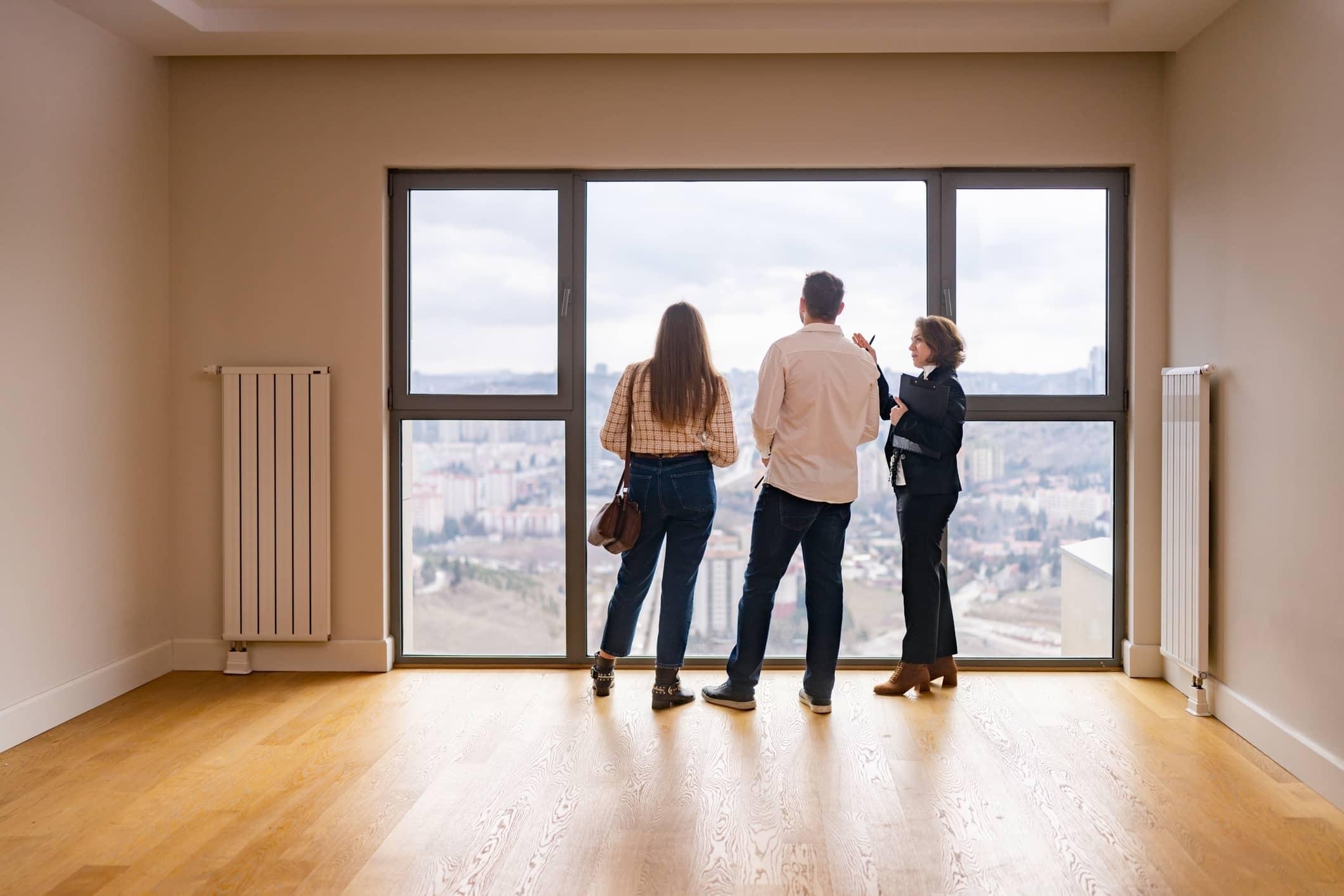How much home can I afford with a 10% down payment option?

Buying a home is a big decision, and one of the first questions you might be asking is, “How much home can I afford with a 10% down payment option?”
That’s a great starting point because your down payment plays a major role in determining how much house you can buy and your overall financial picture. But is 10% enough to get the home you want?
Let’s dive into everything you need to know about down payments, home affordability, and more to help you feel confident on your path to homeownership.
Ready to explore your loan options? Get pre-approved with Rate’s Same Day Mortgage pre-approval and find the loan that fits your needs perfectly!*
Is a 10% Down Payment Option Enough to Afford a House?
When considering whether a 10% down payment option is enough, it’s important to understand that different lenders and loan programs have various down payment requirements.
While 20% down is often recommended, putting down 10% is still a solid option for many home buyers, especially if you have good credit and stable income.
A 10% down payment option is less than the typical 20%, but it can still open up a range of home loan options like conventional loans and FHA loans.
However, putting down less than 20% usually means you’ll need to pay Private Mortgage Insurance (PMI), which adds to your monthly mortgage payment.
PMI is a type of insurance that protects the lender if the borrower defaults on the mortgage. While it might seem like a drawback, it’s worth considering PMI if it means you can buy a home sooner and start building home equity.
Pros and Cons of a 10% Down Payment
A 10% down payment option comes with both benefits and drawbacks that are worth considering before making your decision.
Pros
More Cash in Your Pocket
A 10% down payment option keeps more cash available for other expenses like closing costs or building an emergency fund.
Faster Homeownership
Allows you to get into the home market more quickly, which can be crucial in high-demand areas such as California where real estate prices rise rapidly.
Potential for Good Interest Rates
With a strong credit score, you may still secure a favorable interest rate, even with a lower down payment.
Cons
Increased Loan Amount
A lower down payment means a higher loan amount, which can raise your monthly mortgage payment.
Private Mortgage Insurance (PMI)
You’ll likely need to pay PMI since it’s below 20%, potentially adding hundreds of dollars to your monthly expenses.
Longer Path to Build Equity
It may take more time to build home equity compared to higher down payment options, affecting your long-term financial goals and overall personal finance strategy.
How 10% Affects Your Mortgage Terms and Interest Rates
With a 10% down payment, your lender might offer slightly higher mortgage rates compared to those with a 20% down payment. Why? Because a lower down payment increases the lender’s risk. However, that doesn’t mean you can’t secure a good deal.
Can You Get a Mortgage with 10% Down?
Conventional mortgage lenders often consider other factors like your credit score and debt-to-income ratio, so it’s possible to lock in a competitive fixed-rate even with a 10% down payment option.
If you’re a first-time homebuyer or eligible for special programs like USDA loans or VA loans, you might qualify for additional benefits.
The Department of Veterans Affairs offers VA loans with zero-down payment options, and USDA loans can also help lower the upfront costs for properties in rural areas.
When a 10% Down Payment Option Is a Smart Choice
A 10% down payment option can be a smart choice if you have other financial goals or want to keep a healthy emergency fund.
For example, if you’re investing in other assets or planning to save for a second home or investment property, putting down 10% on your primary residence may allow you to spread your money across multiple investments, ultimately increasing your financial security.
It’s also a good option if you’re planning to refinance in the future. As you build equity in your home, you can explore refinancing options that help you remove PMI, lower your interest rate, or adjust your loan term to fit your evolving financial situation.
Keep in mind that different down payment options impact your refinancing eligibility and the amount of home equity you can access.
Benefits of a Larger Down Payment
A larger down payment can provide several key advantages when buying a home. Here are a few of the main benefits:
Lower Monthly Payments
A larger down payment reduces your loan amount, which lowers your monthly mortgage payments and frees up room in your budget for other expenses.
Better Interest Rates
Lenders often offer lower interest rates with larger down payments. This reduces your long-term costs and can lead to significant savings over the life of your loan.
Avoid Private Mortgage Insurance (PMI)
A down payment of 20% or more eliminates the need for PMI. Without this additional cost, your monthly payments are lower, and you’ll save money in the long run.
Build Equity Faster
A larger down payment means you’ll own more of your home upfront, helping you build equity more quickly for future refinancing or selling opportunities.
How Much Should You Put Down on a House?
Your down payment should match your financial goals. A 20% down payment helps you avoid PMI and lowers your loan amount, but many buyers opt for 10% to keep cash for other needs.
Choose a down payment that aligns with your budget and long-term goals.
How Can I Calculate My Mortgage with a 10% Down Payment?
Calculating your mortgage loan with a 10% down payment option is straightforward. You can use Rate’s online mortgage calculator or consult with a mortgage lender, like Rate, to get an accurate estimate.
Plug in the home’s purchase price, your down payment amount, and the current interest rate to see what your monthly mortgage payment will look like.
You’ll also want to consider other costs like property taxes, homeowners insurance, and PMI, which will affect your total monthly payment.
Remember to factor in closing costs, which can range from 1% to 5% of the home’s purchase price, so you have a full picture of the upfront costs you’ll need to cover.
How Much Is 10% Down on a $300K Home?
A 10% down payment option on a $300,000 home is $30,000. This amount will reduce your loan amount to $270,000.
With the reduced loan amount, you’ll be able to calculate your monthly mortgage payment based on the current mortgage rates and loan term.
For first-time homebuyers, this lower down payment may also make you eligible for down payment assistance programs through credit unions or state housing agencies.
How Much Is 10% Down on a $400K Home?
For a $400,000 home, a 10% down payment option would be $40,000. That leaves you with a $360,000 mortgage loan.
Keep in mind that on top of the loan amount, you’ll still need to consider PMI, interest rates, and other related costs.
This is a great option if you’re looking to enter competitive housing markets in places like California without having to put down 20%.
How Much Is 10% Down on a $500K Home?
A 10% down payment option on a $500,000 home amounts to $50,000. This means your loan amount will be $450,000.
As with other loan amounts, your monthly mortgage payment will depend on the type of mortgage, the interest rate, and whether the property is a primary residence or investment property.
Depending on the location and type of loan, you might also need to account for additional fees like funding fees for VA loans or insurance premiums.
How Much Is 10% Down on a $600K Home?
On a $600,000 home, a 10% down payment option is $60,000, leaving you with a mortgage of $540,000.
For a high loan amount like this, you might need to explore jumbo loan options if it exceeds the loan limits set by Fannie Mae or Freddie Mac.
Jumbo loans have stricter requirements, but they can help finance a new home purchase in high-cost areas.
How Much Is 10% Down on a Million-Dollar Home?
A 10% down payment option on a $1,000,000 home is $100,000. This substantial amount would likely require a jumbo loan, as it exceeds conventional loan limits.
Jumbo loans often have stricter down payment requirements, and borrowers will need a higher credit score to qualify. Lenders may also scrutinize your debt-to-income ratio more closely with such a large loan amount.
Be prepared to show strong financial health and an ability to handle the potential for higher monthly payments.
How Can I Get Pre-Approved for a Mortgage?
Getting pre-approved for a mortgage is a smart move before house hunting. It shows sellers that you’re a serious buyer and gives you a clear picture of what you can afford.
To get pre-approved, submit a mortgage application with a qualified lender, like Rate, with details about your income, credit score, and financial situation.
Be sure to check the eligibility criteria for different types of down payment mortgages, including FHA mortgage options and USDA loans, especially if you’re a service member or looking to purchase in a rural area.
Make sure your minimum down payment meets the requirements for the type of loan you want to apply for.
Documents Needed for Mortgage Pre-Approval
You’ll typically need pay stubs, tax returns, bank statements, and information about any other debts or assets. Providing a complete and accurate picture of your finances will speed up the pre-approval process.
Depending on the type of mortgage, you might also need to meet specific loan limits set by the Federal Housing Administration.
If you’re looking at low down payment options, you can check out qualified realtors by the National Association of Realtors to see how they can help you navigate what percent down is required based on the home value and type of property.
How Long Does Mortgage Pre-Approval Take?
The timeline can vary depending on your lender and how quickly you provide the necessary documentation.
Quick approval is especially valuable if you want to avoid competition or potential issues like foreclosure on properties you’re interested in.
Tips for Increasing Your Chances of Pre-approval
Improving your credit score, paying off existing debts, and avoiding big purchases or new credit cards before applying can increase your chances of getting pre-approved.
Being proactive about your financial situation and ensuring you meet the minimum down payment requirements can make the difference between getting pre-approved or denied.
Explore different down payment options to find the ideal fit for your financial goals, and remember that many Americans can qualify for homeownership with as little as a 3% or 5% down payment, depending on the type of loan.
It’s Time to Turn Your Dream of Homeownership into a Reality
Wrapping up, a 10% down payment option can absolutely put you on the path to owning your dream home.
It’s flexible enough for first-time homebuyers and offers the potential to buy a higher-value property without waiting to save for a larger upfront amount.
If you’re eager to start the process, our Same Day Mortgage pre-approval makes it easy to get pre-approved and secure your new home faster.*
You don’t have to wait—apply today and see just how quick and simple it can be to turn your homeownership dreams into reality!
*Rate, Inc.’s Same Day Mortgage promotion offers qualified customers who provide certain required financial information/documentation within 24 hours of locking a rate on a mortgage loan the opportunity to receive a loan approval within 1 business day of timely submission of documentation and does not suggest that the borrower will receive funding on the same day as their application submission. Rate, Inc. cannot guarantee that a loan will be approved or that a closing will occur within a specific timeframe. Applicant subject to credit and underwriting approval. Restrictions apply. Visit rate.com/same-day-mortgage for terms and conditions.
Guaranteed Rate, Inc. is a private corporation organized under the laws of the State of Delaware. It has no affiliation with the US Department of Housing and Urban Development, the US Department of Veterans Affairs, the US Department of Agriculture, or any other government agency.




